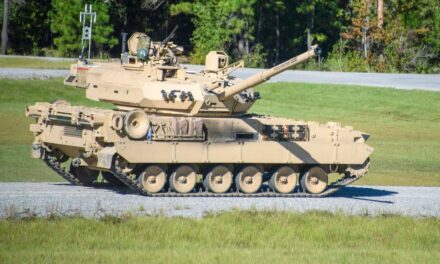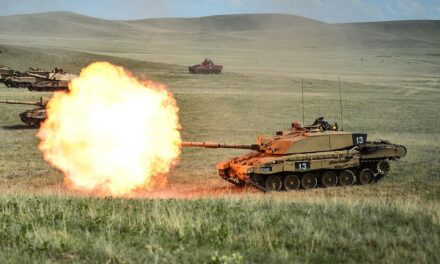We support our Publishers and Content Creators. You can view this story on their website by CLICKING HERE.
Key Points: Russia’s Su-57 Felon, its 5th-generation stealth fighter, presents uncertainties regarding its combat capabilities. While boasting a stealthy design, speeds up to Mach 2, and a range of 2,200 miles, it may lack the thrust-to-weight ratio and agility of the F-22 Raptor.
-Equipped with AESA radar, phased array systems, and Infrared Search and Track (IRST), the Su-57 appears suited for high-threat environments, yet its networking and manned-unmanned teaming capabilities remain unclear.
-With only 4–15 operational units and plans for 76 over five years, the Su-57 lags far behind the U.S. and NATO in numbers and advanced combat integration.
Russia’s Su-57 Felon: Can It Rival U.S. 5th-Gen Fighters?
Little is known about how much of a threat Russia’s 5th-generation Su-57 Felon poses to adversaries.
Russian media says many things about the airframe’s performance parameters, yet little seems to be known about its computing, weapons interfaces, sensing, and manned-unmanned teaming capabilities.
Certainly looking at the configuration, the Su-57 does look stealthy with its blended-wing body and rounded fuselage.
However, how might it compare with the F-35 in regard to sensing and high-speed, AI-enabled computing able to gather sensor input from disparate pools of data and perform immediate analysis and organization to present integrated information to a pilot?
Additional specs on the Su-57 suggest it can hit speeds of Mach 2 and travel ranges out to 2,200 miles.
This makes the jet slightly slower than an F-22, which can reportedly hit speeds of Mach 2.25. Also, the Su-57 may not have a thrust-to-weight ratio able to rival an F-22, meaning it may not be as competitive as a complete air-dominance platform such as the F-22.
It is reported that the Su-57 has an AESA, or Active Electronically Scanned Array radar and phased array radar, supported by extensive electronic countermeasures.
Further detail suggests the Su-57 operates with an F/A-18-like Infrared Search and Track targeting technology, which among other things, enables fighter jets to operate in a high-threat “jamming” environment.
Russian Su-57 and Su-57 Stealth Fighters. Image Credit: Russian Government.
How many Su-57s Does Russia Have?
Regardless of the extent to which the Felon can truly rival U.S. 5th-generation aircraft, Russia’s next-generation aircraft primarily suffers from a numbers problem. There are just not that many of them, as multiple public reports say there are currently somewhere between four and 15 operational Felon aircraft, and Russia’s TASS news agency has reported plans for the country to acquire 76 Su-57s over the next five years.
The U.S., for example, operates as many as 300 F-35s or more, and that is not including the fast-arriving NATO and European F-35s, so this gives the U.S. and NATO a sizeable margin of superiority when it comes to a possible air superiority war with the Su-57.
There is also the question of manned-unmanned teaming, as Russian media reports have made mention of efforts to connect drones with manned fighter jets using what the U.S. Air Force refers to as a “loyal wingman” type of scenario.

Su-57. Image Credit: Creative Commons.
The U.S. Air Force, for instance, has shown that its Valkyrie drone is able to share real-time data with an F-35, and it does not seem at all clear that Russia’s Su-57 is in any way capable of such use of technology.
Russia’s Izvestia news reports that the Felon is working to network with Russia’s S-70 Okhotnik B-drone. The extent of Russian progress with this may be unknown, in terms of whether the Su-57 can operate with the ability to control drones in real-time.
About the Author: Kris Osborn
Kris Osborn is the President of Warrior Maven – Center for Military Modernization. Osborn previously served at the Pentagon as a Highly Qualified Expert with the Office of the Assistant Secretary of the Army—Acquisition, Logistics & Technology. Osborn has also worked as an anchor and on-air military specialist at national TV networks. He has appeared as a guest military expert on Fox News, MSNBC, The Military Channel, and The History Channel. He also has a Masters Degree in Comparative Literature from Columbia University.

 Conservative
Conservative  Search
Search Trending
Trending Current News
Current News 





